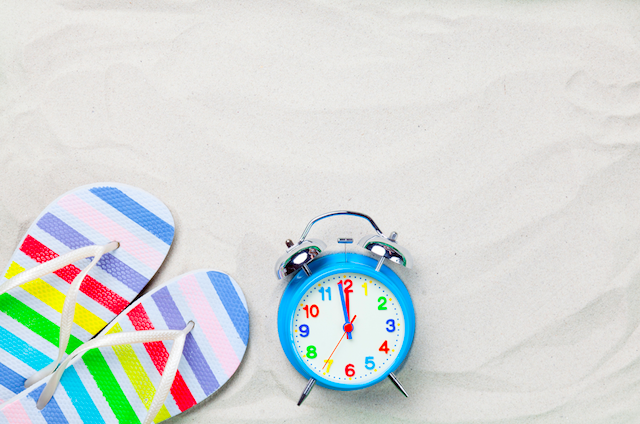
“Edit your life frequently and ruthlessly. It’s your masterpiece after all.” ~Nathan W. Morris
I began 2015 by cleaning out my closet. I sold and donated and trashed the pieces that weren’t serving me anymore. Embarrassingly enough, I purged nearly 100 items. It felt great. Getting rid of stuff and seeing beauty behind the clutter was incredible. But this story isn’t really about my closet.
It’s also not about my desk drawers, my linen closet, or my kitchen, which all came next. As it turns out, getting rid of clutter and extra things was just the tip of the iceberg. In the same way that buying things didn’t make me feel better, getting rid of things wasn’t really the solution, either.
What I initially imagined as an exercise in clothing minimalism has turned into a pursuit of “better, but less” across all areas of my life. So I started thinking about what it was that I valued most, that I wanted more of most. The answer? Time.
I wanted time to finish what I started. I wanted time with my most important people. I wanted time for pleasure and healing. And I wanted time to go slowly. After nearly a year, the result is more joy, more freedom, more space for what matters.
So how can you declutter your schedule and create better priorities? It’s about crafting joy through not just having less, but doing less. Here are some ideas on how to make it happen:
Honestly look at what you’re already committed to.
None of this works if you aren’t honest about what’s already in your schedule. From major work commitments to how much time you’re choosing to be on Facebook, keep a candid journal on where your time goes. Watch this for a little while. Try not to judge yourself, but look at what you’re prioritizing, consciously or unconsciously.
Once you see what you’re committed to and how you’re spending your time, you can start to edit. Does what’s on your schedule line up with your values and goals? Or is it time to make a shift?
I realized that I was committed to far too many projects, and that I wasn’t able to do them all well. I also acknowledged that I needed what I call “integration time”—a buffer where I could process new lessons or emotional events.
Since then, I’ve signed up for fewer classes and scheduled more time for myself to integrate what I’m learning.
I’ve scaled back the number of happy hours I attend in exchange for coffee dates during the day. This leaves me quiet evenings at home for reading, crafting, and relaxing.
I’ve also pared back the number of political causes I’m a part of, choosing to focus on one or two important projects at a time.
Follow the “three thing” rule.
It’s like the old saying: “If everything is a priority, then nothing is.” Choose three things that are the real priorities in your life. Start small. What are the three things you want to accomplish today? Start with those as the skeleton of your day, and build everything else around them.
You might not do those three things first, chronologically, but arrange your day so that you’re sure they’ll happen. Or, you may find that unless you make time for reading, meditation, or exercise before work, that it won’t happen.
I’ve noticed that this “three thing” rule is also a good boundary for understanding when I’ve done “enough.” As someone who has a hard time switching off sometimes, using the three thing rule as a guidepost can help me to know when to call it a day. If I’ve accomplished what I absolutely need to, then maybe I can afford stop work to go for a walk or make a great home-cooked meal.
Honing in on only three things helps us to clear the noise and distractions so that we can focus on what feels most meaningful. You can start to extrapolate, too: what are the three things you want to make sure happen this week? This month? This year? Choosing only three makes sure that we are ruthlessly clear on what matters most.
Start saying no.
This one is pretty simple. If it’s not supporting your values, your priorities, your “three things” or your inner well-being, it has to be a no.
I suggest that for a set period of time (two weeks tends to do the trick), everything that isn’t already on your plate is a no. This gives your brain and schedule a break from more input before you dive in again.
Of course, there are times when it’s not reasonable to drop everything, such as if you’re caring for a child or aging parents. If this is the case, it’s even more important to pare down the nonessential, and maybe even ask for help.
The ability to craft elegant boundaries and a good rubric for new commitments can be a process. But over time, you’ll learn to trust your intuition. In the meantime, get some practice in confidently saying no. People in your life will also learn how to hear your no, and respect it.
If lots of noes seem awkward to you, just remember that you’re actually saying yes to what you really want.
When I was caring for my mom when she was ill a few years ago, I needed a lot of time to recharge in between visits. Some friends were offended when I turned down plans; others actually responded with offers of support.
Just by being honest, and a little vulnerable, with what I needed (time and space to digest), I was able to get it. What a novel concept!
—
I’ve spent the last year rigorously employing these tactics to free myself from overwhelm and commitments that stopped feeling good. This has meant paring back my volunteer commitments and some community classes where I’d been involved. It’s meant saying no to enticing invitations and choosing not to sign up for fascinating opportunities.
This might have been awkward, but I find that most people are familiar with that feeling of overwhelm. They recognize it in themselves. Most people actually respect that I’m choosing to honor my well-being in this way, and that I’m interested in quality over quantity.
The results of scaling back were really surprising to me. Doing less not only gives me more space for my own care, but it actually allows me to make a greater impact. I’m doing less, but I’m doing it with more grace and accountability. I do what I say I’m going to do. I have the time and space to follow through well on my commitments.
By doing less, I’m able to show up more present for the people in my life and be more grounded in the present moment. By focusing on fewer projects, commitments and calendar-clutter, I’m doing less, but I’m doing everything fully—and with far more joy.
Clock and flip flops image via Shutterstock
About Christy Tending
Christy Tending is an activist, teacher, and writer. She is a self-care mentor for rebellious humans. She is the mama to one small human and a couple of feral cats. She lives in Oakland, California. Visit her at www.christytending.com and on Instagram.













 Though I run this site, it is not mine. It's ours. It's not about me. It's about us. Your stories and your wisdom are just as meaningful as mine.
Though I run this site, it is not mine. It's ours. It's not about me. It's about us. Your stories and your wisdom are just as meaningful as mine.